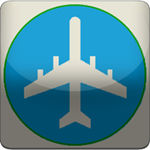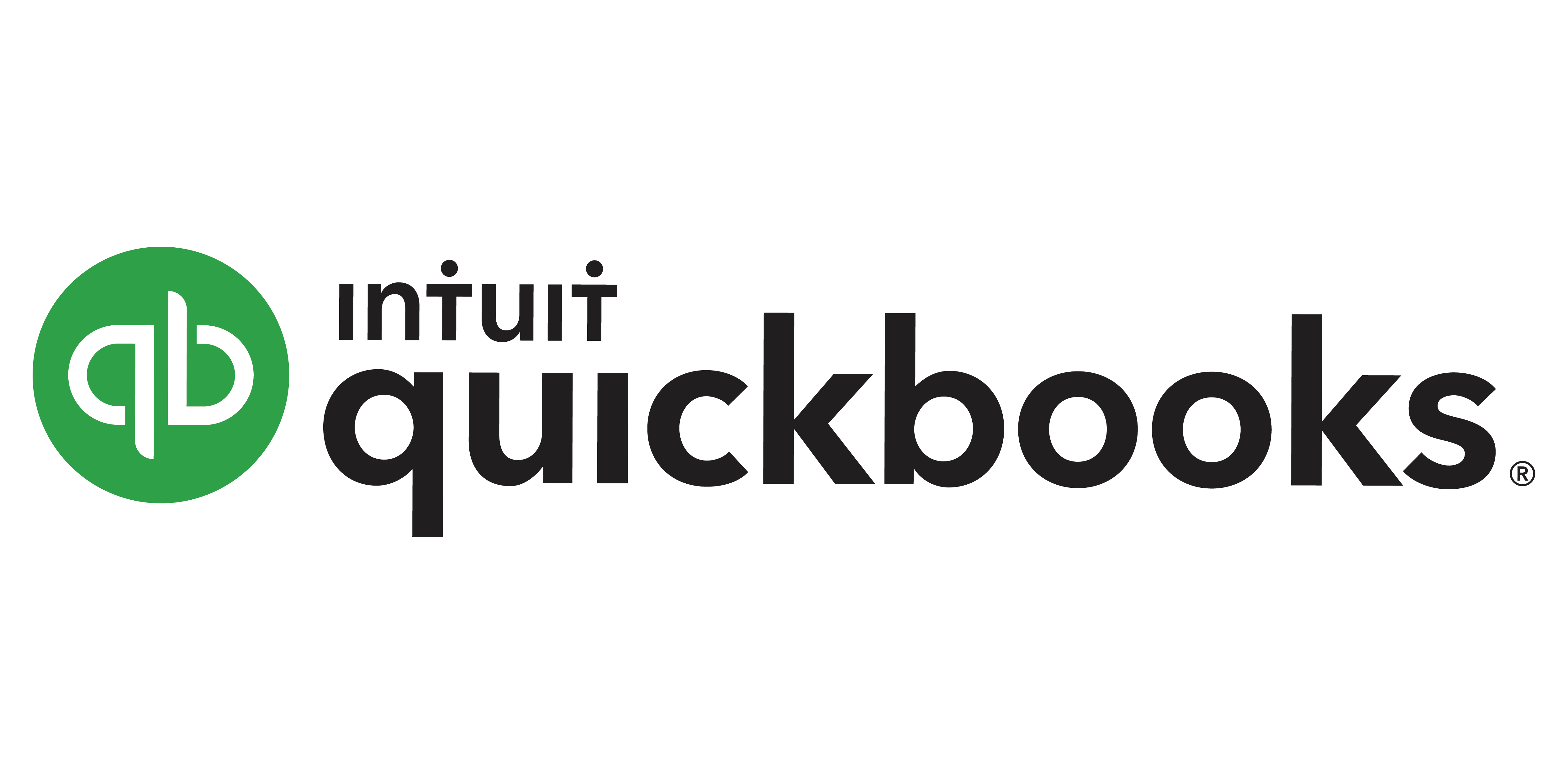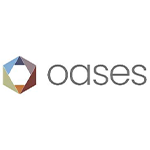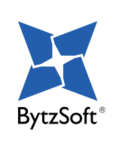What Is Aviation Maintenance Software?
Aviation maintenance software is a type of specialized technology used in the aviation sector to streamline and optimize aircraft and related equipment maintenance procedures. It is an effective tool for airlines, maintenance repair organizations (MROs), and other aviation enterprises to efficiently manage assets while ensuring safe and reliable operations.
Aviation maintenance software is essentially a centralized database that maintains all information about an aircraft's maintenance, such as scheduled and unscheduled maintenance activities, work orders, inspection reports, and component histories. This data is then processed and packaged in an easy-to-use interface, giving maintenance personnel with real-time insights and reports.
One of the primary advantages of adopting aircraft maintenance software is its ability to automate and digitize many manual procedures, including inventory management, scheduling, and documentation. This not only avoids human mistake, but it also increases efficiency and saves time, allowing maintenance staff to focus on more important activities. Furthermore, aircraft maintenance software frequently includes advanced capabilities such as predictive maintenance, which employs data analytics and machine learning to anticipate possible equipment failures, allowing for proactive maintenance and minimizing costly downtime.
Buyers must evaluate criteria such as compatibility with existing systems, convenience of use, and scalability when selecting the best aviation maintenance software. Additionally, elements such as customer support, training, and data security should be carefully considered.
What Are The Recent Trends In Aviation Maintenance Software?
Aviation maintenance software is critical to the efficient functioning and safety of any aircraft, and as technology advances, this software evolves. Many innovations in aviation maintenance software have emerged in recent years, significantly improving its capabilities and usefulness to both engineers and operators.
Buyers should be aware of the following key recent trends in aviation maintenance software:
1. Integration with Internet Of Things (IoT) Devices: One of the most important trends in aircraft maintenance software is the integration of IoT devices. These gadgets, including as sensors and trackers, capture real-time data from the aircraft and send it to software for analysis. This enables proactive maintenance by identifying and addressing possible faults before they escalate. This tendency has significantly increased the safety and efficiency of aviation maintenance.
2. Cloud Adoption: As cloud technology advances, an increasing number of aircraft maintenance software companies are introducing cloud-based solutions. This makes it easy for teams to collaborate and access information, as well as perform automatic backups and changes. Cloud-based solutions also reduce the need for on-premise hardware and maintenance, saving money for operators.
3. Implementation Of Artificial Intelligence (AI): AI has transformed numerous industries, including aircraft maintenance. AI-powered maintenance software can analyze enormous volumes of data to detect patterns and predict maintenance needs. This not only saves time and resources, but also lowers the likelihood of human error. AI-powered software can also learn from previous maintenance data and continuously improve its recommendations.
4. Mobile Compatibility And The Growing Usage Of Mobile Devices: Aviation maintenance software suppliers now provide mobile compatibility, allowing engineers to access and update maintenance information from their cellphones or tablets. This is especially handy for in-the-field maintenance and inspections. Furthermore, more and more airlines are providing their pilots with tablets for electronic flight baggage, which can also be utilized for maintenance chores.
5. Improved Cybersecurity Measures: As technology in aircraft maintenance has become more prevalent, so has the possibility of cyber threats. As a result, there has been an increase in the implementation of increased cybersecurity measures in aircraft maintenance software. This includes strong encryption, multi-factor authentication, and frequent security audits to safeguard sensitive maintenance data.
Benefits of Using Aviation Maintenance Software
Aviation maintenance software is gaining popularity in the aviation industry. This type of software is intended to streamline and improve aircraft maintenance procedures, making it an indispensable tool for any airline or aviation corporation.
There are numerous advantages to adopting aviation maintenance software, we will go over the most important:
1. Streamlines Maintenance Processes: One of the biggest advantages of adopting aircraft maintenance software is that it simplifies maintenance procedures. This program automates operations like scheduling, tracking, and reporting, which saves maintenance crews time and effort. This program allows for more efficient completion of maintenance activities, resulting in reduced aircraft downtime and greater operational efficiency.
2. Improves Maintenance Tracking: Aviation maintenance software documents and tracks all maintenance actions electronically, eliminating the need for manual record-keeping. This feature ensures that all maintenance chores are executed on time and provides easy access to the whole maintenance history. It also allows maintenance teams to better plan and prioritize work, resulting in more organized and effective maintenance operations.
3. Improves Safety And Compliance: Aviation maintenance software is designed to adhere to industry laws and standards, ensuring that all maintenance operations are completed in a safe and compliant manner. This program also includes features that alert maintenance personnel to any upcoming chores or inspections, ensuring that all scheduled maintenance is completed on time and lowering the chance of safety accidents.
4. Improves Cost-Efficiency: Aviation maintenance software saves time and money for airlines and aviation industries by automating maintenance procedures, improving tracking, and increasing safety and compliance. It removes the need for human record-keeping, decreases downtime, and lowers the likelihood of costly safety issues. Overall, using this software improves the company's cost efficiency.
5. Provides Real-Time Data And Analytics: Aviation maintenance software enables maintenance personnel to make data-driven decisions. This data can be used to identify reoccurring issues, understand maintenance trends, and optimize maintenance methods. With this important insight, maintenance crews may work more efficiently and make critical decisions that benefit the airline or aviation industry.
Final Thoughts: Aviation maintenance software provides numerous benefits to any airline or aviation company trying to improve its maintenance processes. This program is a must-have for improving operational efficiency, safety, and compliance by streamlining procedures and increasing cost-effectiveness. Aviation maintenance software, with its extensive features and capabilities, is a must-have for every modern aviation company that wants to stay competitive.
Important Factors To Consider While Purchasing Aviation Maintenance Software?
When choosing aircraft maintenance software, numerous critical elements must be examined to guarantee that you obtain the best solution for your needs. As the aviation industry evolves and becomes more complicated, having the appropriate software in place is critical for efficient and effective maintenance operations. So, here are some crucial considerations to consider while assessing different aviation maintenance software options.
1. Functionality and Compatibility: The first and most crucial considerations are the software's functionality and compatibility. It should have complete capabilities tailored to aircraft maintenance, such as maintenance scheduling, work order management, inventory tracking, and compliance monitoring. Furthermore, the software should interact effortlessly with your current systems and equipment to eliminate compatibility concerns.
2. User-Friendly Interface: Aviation maintenance software should have an intuitive interface that is simple to explore and understand. This is critical to ensuring that all maintenance people can use the software effectively without substantial training or technical knowledge. To improve the user experience, look for software with a clean design and intuitive interface.
3. Data Security: Aviation maintenance requires extremely sensitive data, thus privacy and security should be top priorities when purchasing software. Ensure that the program has strong security mechanisms in place, such as data encryption, regular backups, and user access controls. This will secure your data from cyber threats while also ensuring compliance with industry requirements.
4. Mobile Accessibility: In today's digital age, being able to access information on the go is critical for any organization. Consider software that is mobile-friendly and allows you to view maintenance data on any device. This is particularly useful for technicians who need to access maintenance procedures and work orders while on the go.
5. Maintenance Tracking and Reporting: The program should include complete tracking and reporting capabilities that give you real-time visibility into your maintenance activities. This allows you to track and evaluate maintenance patterns, find areas for improvement, and make data-driven decisions that lead to more effective maintenance operations.
6. Provider Support And Maintenance: Before making a purchase, verify the level of support provided by the software provider. Look for organizations that provide technical support, regular software updates, and training to ensure that your team has complete support throughout the software deployment process.
7. Cost And Return On Investment: Finally, examine the software's cost and prospective return on investment (ROI). While it may be tempting to go with the cheapest choice, remember that investing in a solid and complete software can have a greater influence on your maintenance operations and overall profitability in the long term.
What Are The Key Features To Look For In Aviation Maintenance Software?
When seeking to invest in aviation maintenance software, you should carefully assess the features that will best meet your individual requirements. The following are the major features to look for in aircraft maintenance software:
1. Integration: This refers to the software's ability to work seamlessly with other aviation-related systems and applications, such as inventory management, scheduling, and accounting. A centralized system with excellent integration capabilities can considerably increase efficiency while decreasing the likelihood of human mistake.
2. Task Management: A decent aviation maintenance software should include powerful task management features that enable the creation, tracking, and assigning of jobs to technicians and other team members. This feature should also provide for real-time updates on task progress and completion.
3. Compliance Management: Aviation maintenance is a highly regulated profession, thus all software used must adhere to industry norms and laws. Look for features like automatic compliance checks and audit tracking to ensure that your operations always meet regulatory standards.
4. Inventory Management: Keeping track of components and supplies is critical for proper maintenance operations. Look for software that supports inventory tracking, automatic reordering, and stock level monitoring.
5. Forecasting And Analysis: Analytical features like configurable reporting, predictive maintenance, and trend analysis can provide significant insights into maintenance operations, allowing you to find areas for improvement and save money.
6. Mobile Compatibility: Because professionals frequently operate on the fly, it is critical to select aviation maintenance software that is mobile-friendly. Look for mobile apps and cloud-based technologies to facilitate access and collaboration.
7. User-Friendly Interface: A user-friendly interface can help you save time and be more productive. Look for software that has a basic and user-friendly design.8. Customer assistance: As with any program, it is critical to have dependable customer assistance in the event of any technical problems or questions. Look for software that includes a specialized support team as well as self-help materials like tutorials and FAQs. By taking these essential qualities into account, you can choose the best aircraft maintenance software for your operations, resulting in increased productivity, compliance, and overall aviation success.
Why Do Businesses Need Aviation Maintenance Software?
Businesses in the aviation industry have complicated and unique maintenance requirements, thus they must invest in specialized aircraft maintenance software. This software offers a comprehensive solution for managing and optimizing all elements of aviation maintenance, including scheduling and tracking repair jobs, inventory management, and regulatory compliance.
One of the primary reasons why organizations want aircraft maintenance software is to streamline their maintenance procedures and increase efficiency. This program enables firms to automate the scheduling and tracking of maintenance procedures, lowering the risk of human mistake and enhancing productivity. This results in a significant reduction in downtime and maintenance expenses.
Furthermore, aviation maintenance software provides a consolidated platform for monitoring all maintenance tasks, allowing organizations to better monitor their whole fleet. It enables them to monitor individual aircraft performance, identify reoccurring difficulties, and solve prospective maintenance concerns before they become more serious.
This preventive strategy not only helps to avoid costly malfunctions, but also assures the safety of the aircraft and its passengers. Aviation maintenance software not only improves productivity and aircraft safety, but it also helps businesses manage their inventories better. Businesses can ensure they have the appropriate parts and components on hand by using tools like as real-time inventory tracking and automated stock alerts, which reduce the risk of delays and increase turnaround time for maintenance activities.
Furthermore, airline maintenance software plays an important role in assuring regulatory compliance. The program includes capabilities including automated record-keeping, maintenance history tracking, and customisable compliance reports, which allow organizations to easily demonstrate compliance during audits.
How Much Time Is Required To Implement Aviation Maintenance Software?
The time it takes to implement aircraft maintenance software varies according to the program and its features, as well as the size and complexity of your organization's activities. However, the software can take anything from a few weeks to several months to completely integrate and function. The installation process is often divided into many stages, which include initial planning and evaluation, data migration, configuration and customisation, training, and testing.
To guarantee a seamless and successful implementation, adequate time and resources must be allocated to each stage. During the first planning and assessment phase, your business will collaborate closely with the software vendor to determine your goals and requirements, as well as any potential obstacles or constraints. This period might last from a few days to a few weeks, depending on how responsive both sides are.
Data migration, or transferring data from your prior system to the new program, can be a time-consuming procedure depending on the volume and complexity of your data. It is critical to ensure that the data is moved correctly and properly to avoid future problems. Configuring and customizing the program to meet your specific requirements can take some time, particularly if you have a complex operation.
It is critical to collaborate closely with the software provider during this stage to ensure that the program is adapted to your organization's needs. Training is an important aspect of the implementation process. Your employees will need to be instructed on how to use the new software effectively. The period of training will be determined by the software's complexity and the number of users.
Following configuration, customization, and staff training, the program will be tested to find any faults or difficulties. This process may take many weeks, and after all bugs have been resolved, the software will be ready for usage. Finally, the time necessary to develop aircraft maintenance software varies, although it often takes a few weeks to several months. It is critical to adequately plan and manage resources to guarantee a successful deployment and smooth transition to the new system.
What Is The Level Of Customization Available In Aviation Maintenance Software?
When it comes to aircraft maintenance software, one of the most important considerations is the level of customisation offered. This refers to the capacity to customize the software to match the specific demands and specifications of your aviation company. Aviation maintenance software offers several levels of customisation, which should be understood before making a purchase.
Here are the three major degrees of customisation you should be aware of:
1. Basic Customization: At its most basic, airline maintenance software allows you to change specific features and settings to match your company procedures. This could include adding custom fields, creating custom reports, and modifying the software layout to fit your needs.
2. Sophisticated Customisation: More complex organizations may require sophisticated customisation. This level of customisation allows you to develop custom workflows, add custom modules, and interface the program with other corporate systems. It enables a more personalized and efficient approach to managing your aviation maintenance activities.
3. Full Customisation: Some aircraft maintenance software suppliers offer full customisation, which means that the software may be developed from the ground up to match your company's specific requirements. This is a more expensive choice, but it offers the greatest degree of freedom and personalization. It is critical to thoroughly evaluate the level of customisation available in each software choice to see whether it meets your business demands and budget.
Consider the software's scalability to guarantee it can handle any future modifications or expansion in your firm. Overall, the extent of customisation in aircraft maintenance software determines its efficacy and suitability for your organization. To make an informed decision for your organization, conduct thorough research and comprehend the customization options provided by various software providers.
Which Industries Can Benefit The Most From Aviation Maintenance Software?
Aviation maintenance software is an invaluable resource for a wide range of enterprises that rely on aircraft for their operations. Its advanced features and capabilities enable firms to handle maintenance more efficiently and effectively, saving them both time and money. However, certain industries may profit more from this software than others. In this buyer's guide, we'll look at which sectors can benefit from aviation maintenance software and why it's so important to their success.
1. Airlines: Aviation maintenance software is especially beneficial to the airline industry. They operate a huge number of airplanes and adhere to a tight maintenance schedule. They can use aviation maintenance software to monitor and track their fleet's maintenance requirements, schedule inspections and repairs, and keep detailed records of all maintenance activities. This assures regulatory compliance, lowers downtime, and increases aircraft safety and reliability.
2. Aviation Maintenance And Repair Organizations (MROs): MROs are another business that can profit greatly from aviation maintenance software. These firms specialize in the maintenance, repair, and overhaul of aircraft, engines, and parts. They can use software to efficiently manage their inventory, track repair orders, and schedule maintenance chores for their clients. This guarantees that work is completed on schedule, errors are minimized, and customers are satisfied.3. Military and Defense: The military and defense industries frequently maintain a large and diverse fleet of aircraft, which is critical to national security. These aircraft require routine maintenance and inspections to ensure their readiness and effectiveness. Military and defense organizations can use aviation maintenance software to manage aircraft maintenance, plan missions and training exercises, and keep thorough maintenance records for compliance and accountability.
4. Corporate And Private Aviation: Aviation maintenance software is extremely useful for corporations as well as individuals who own or lease private aircraft. It enables them to keep track of scheduled maintenance chores, manage their maintenance budget, and ensure that their aircraft are always in top shape for travel. Furthermore, the program may provide reports and notifications for anticipated maintenance requirements, giving owners piece of mind while also assuring the safety of their aircraft.
5. Helicopter Operations: In order to operate safely and efficiently, helicopters must undergo extensive maintenance and inspection processes. Aviation maintenance software includes particular functionality for maintaining rotary-wing aircraft, such as monitoring rotor blade life and scheduling repair jobs based on flight hours. This feature is vital for ensuring the safety and dependability of these aircraft, which are frequently employed for critical activities like emergency medical services and law enforcement.
Conclusion
To summarize, selecting the appropriate aircraft maintenance software is critical for optimizing operations and guaranteeing safety and compliance in the highly regulated aviation business. As a buyer, you must properly assess the features and capabilities of software before making a purchasing decision. First and foremost, assess your individual wants and expectations.
Look for software that includes modules and features that are relevant to your business operations and can help you overcome any present pain issues. User friendliness and ease of implementation should also be prioritized, as these factors can have a significant impact on software uptake and success. Second, ensure that the program adheres to industry regulations and standards, such as the FAA and EASA requirements.
This will keep your organization compliant and prevent any potential penalties or hazards. Third, search for software that provides advanced data management and analysis capabilities. This allows you to manage and analyze maintenance data, identify and forecast possible difficulties, and make informed preventative maintenance decisions, eventually saving time and money.
Furthermore, a cloud-based solution can offer a variety of advantages, including real-time updates and remote access, which can significantly increase operational efficiency. Cost is an important consideration, but it should not be the only determining factor. Instead, compare the pricing to the software's features and benefits to establish its overall value and ROI.
Finally, by thoroughly researching and comparing several aircraft maintenance software alternatives, you can make an informed decision and select the solution that best meets your company's needs and objectives. We hope this buyer's guide has provided useful information and assisted you in your search for the best aviation maintenance software. Happy flying!






















